Wildly Organic Blend of our organic and wildly grown specialty grade arabica coffees.
Blends
The philosophy of blending coffee is something that is considered to be an expectation rather than unusual.
Traditional blending was based on origin and trying to make a coffee more accessible rather than concentrating on each region’s unique flavour and aromatic profiles. Blends are seldom from a single origin or country, rather they combine commonly accepted tastes and aromas per region to complement or diminish strong or over powering characteristics in favour of a smoothed taste and aroma.
Progress of blends
Initial blends were made from coffee regions. The most famous blend being Mocha Java, which was originally a blend of coffees from the port of Mocha and the port of Java, this has since changed and most Mocha Java’s do not contain either now.
As regions became less famous, people started naming blends themselves, using things like different roasts colours to determine a name, like Weiner Mischung. Which was original a combination of a medium and dark roast, this is also not the case now, since it is now taken to mean German or European style coffee.
Later blends started being named after when they were drunk. For example breakfast blend (South Africans drink 50% of all the coffee consumed in a day before 11 o’clock, so this name is popular here) and also naming blends after the brewing process the roaster thought they best suited, like espresso blend.
A high quality coffee blends has at least three, and sometimes 4 coffees. The highly commercial grades have from 9 to over 16 coffees to ensure that the risk of a dominant flavour is reduced, allowing for a year by year uniformity.
Wildly Organic Blend
Arabica is a large group of between 100 and 200 cultivars, depending on what literature you read. The higher quality Arabicas prefer to be grown in the shade, in the tropics and at altitudes above at least 1200 m. The higher grown coffees are harder and have less moisture content, ensuring the flavours and aromas are more intense.
Wildly Organic is a blend of these quality Arabicas. When visiting Ethiopia we found coffee trees growing naturally. Coffees from most of Southern and Western Ethiopia are between 70 and 30% wild, depending on the season and the year. This has always been an important base of the blend Wildly Organic.
Added to that is a very high quality Arabica that is organically grown and certified coffee. The coffee we are referring to is Asorganica from the Southern highlands of Colombia in the department (province) of Cauca. This coffee has a pronounced body with citric, floral and chocolate notes.
Our final addition to the Wildly Organic is at least one more certified organic coffees, which varies dependent on availability and taste. The third (and sometimes fourth) coffee is the mediator between the wild spicy aromas of Limu and the strong deep flavours of the Asorganica. This coffee only makes up around 30% of the total blend but is an important ingredient to a blend that lovers of the organic movement can relish, knowing that is not only wild and organic, but contains strong direct trade links.
The coffee is designed to be very drinkable and plays well with milk.
Our Brews
| Brew Method | Ratio |
| Espresso | 1:2.25 |
| AeroPress | 17g:200g |
| Plunger | 48g:600g |
| Pour over/filter | 14g:200g |
Transparency Information
| Sourced from | Varies on the season |
|---|---|
| FOB price | Listed in each component |
| Cupping score | Typically, between 83-85. |
| Other Information | This is a blend of the coffees we currently have as either organically certified that score about 83 and (or) coffees that grow wild and score above 83. |



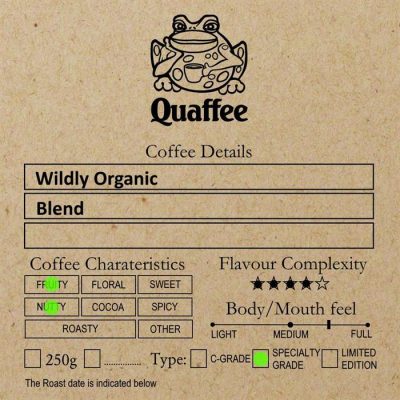

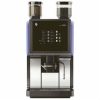
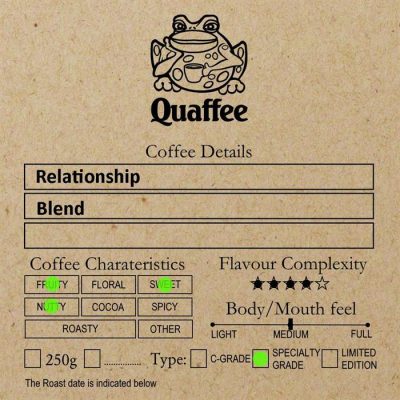
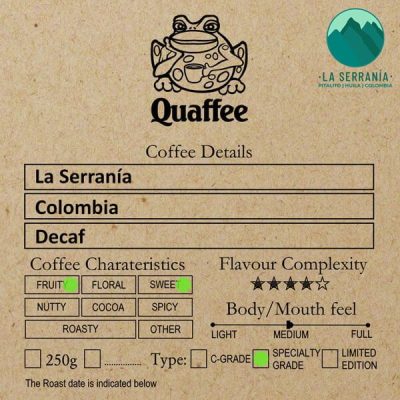
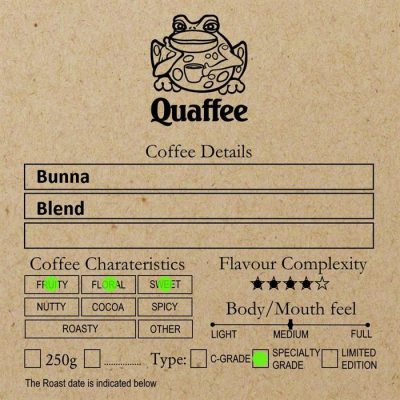
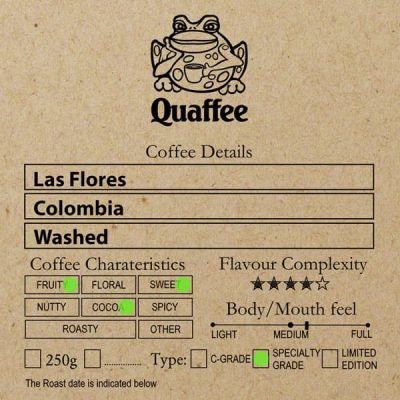
Reviews
There are no reviews yet.